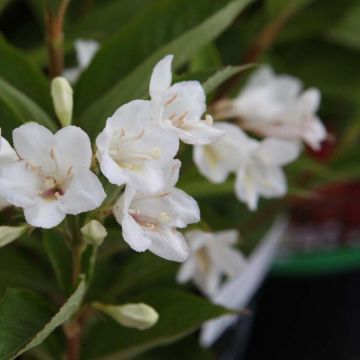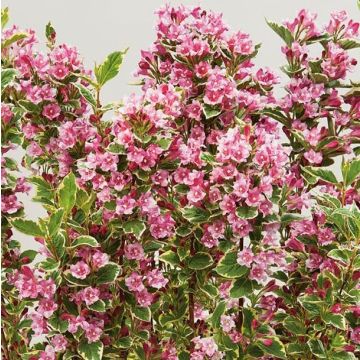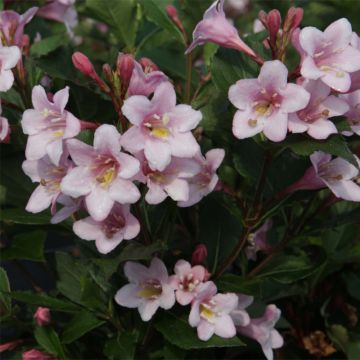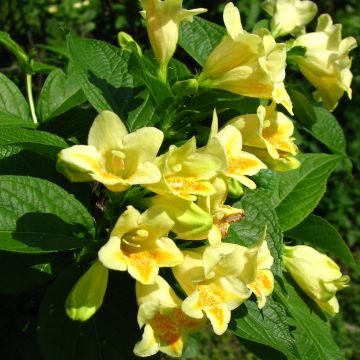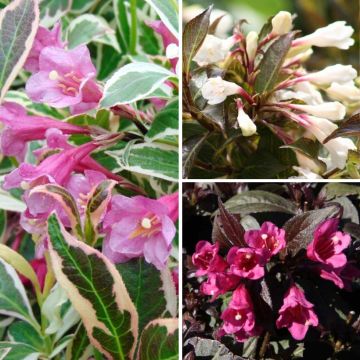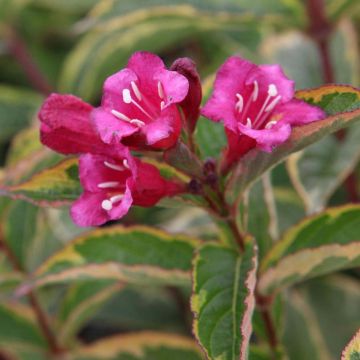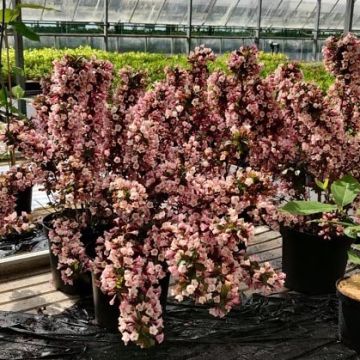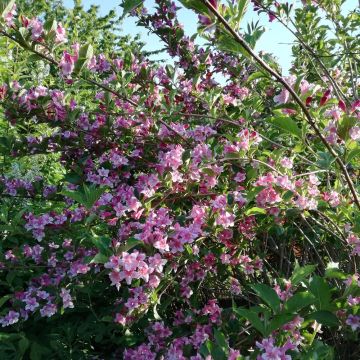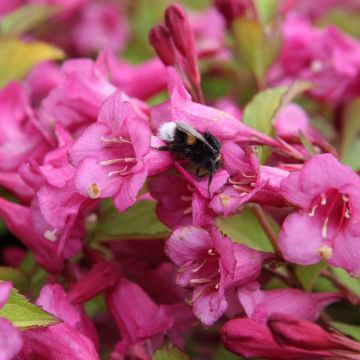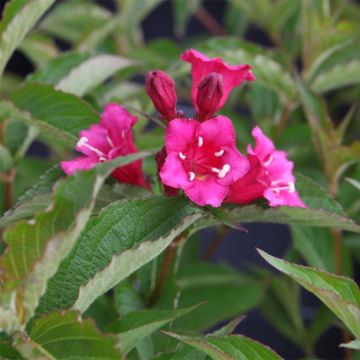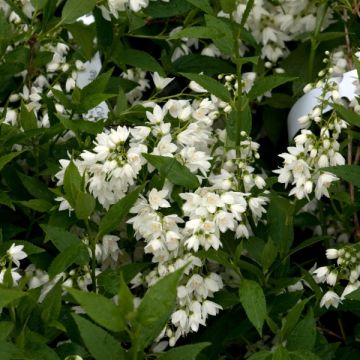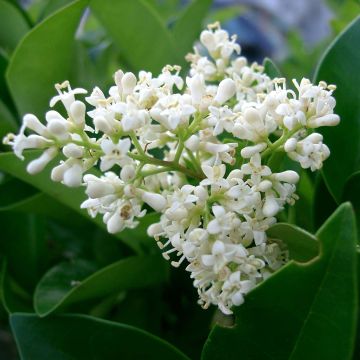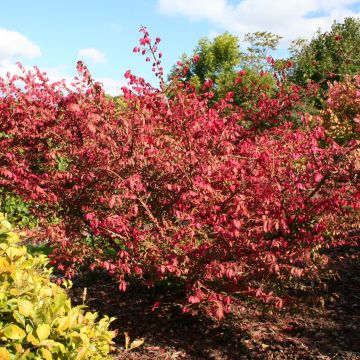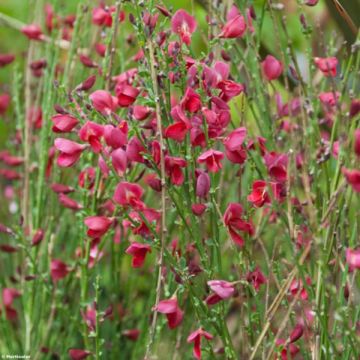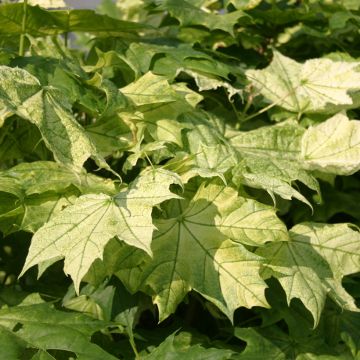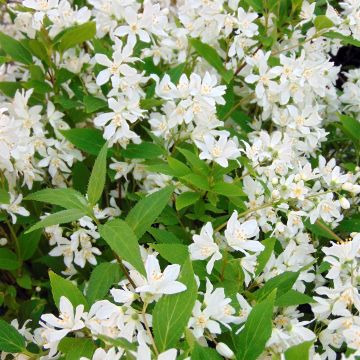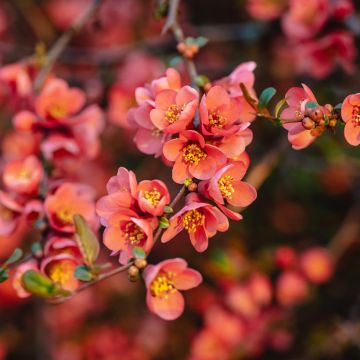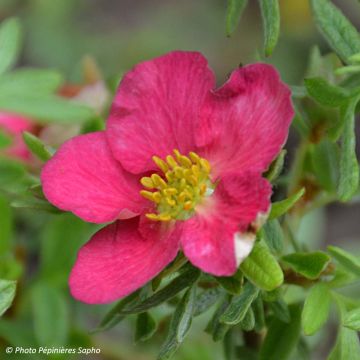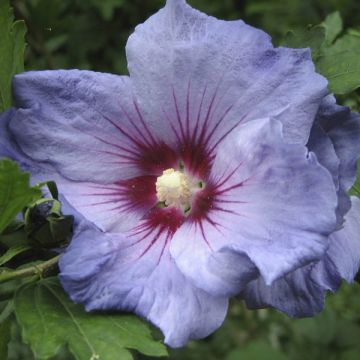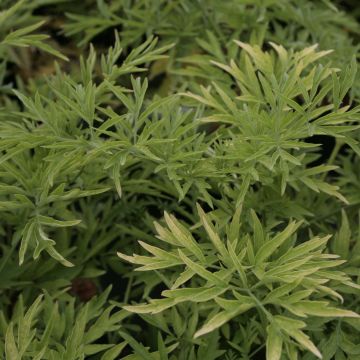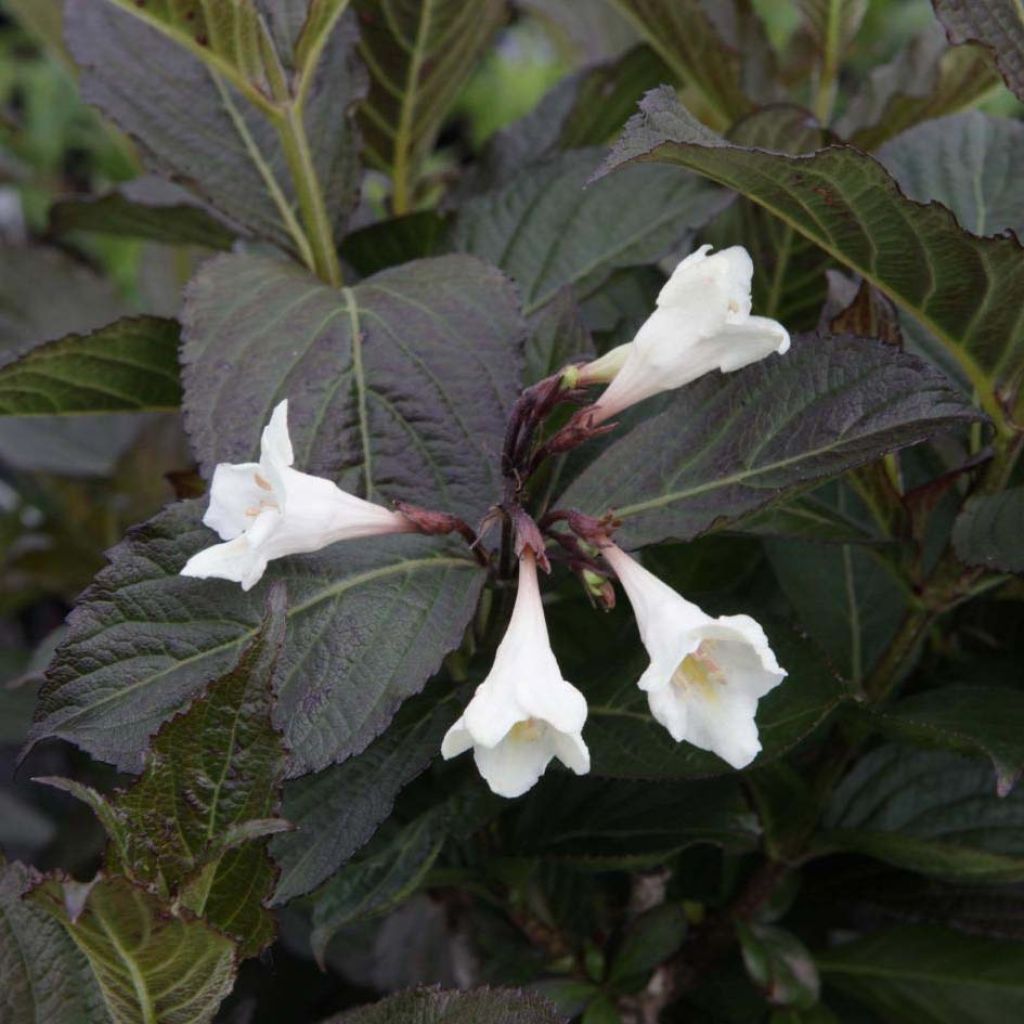

Weigela Ebony and Ivory
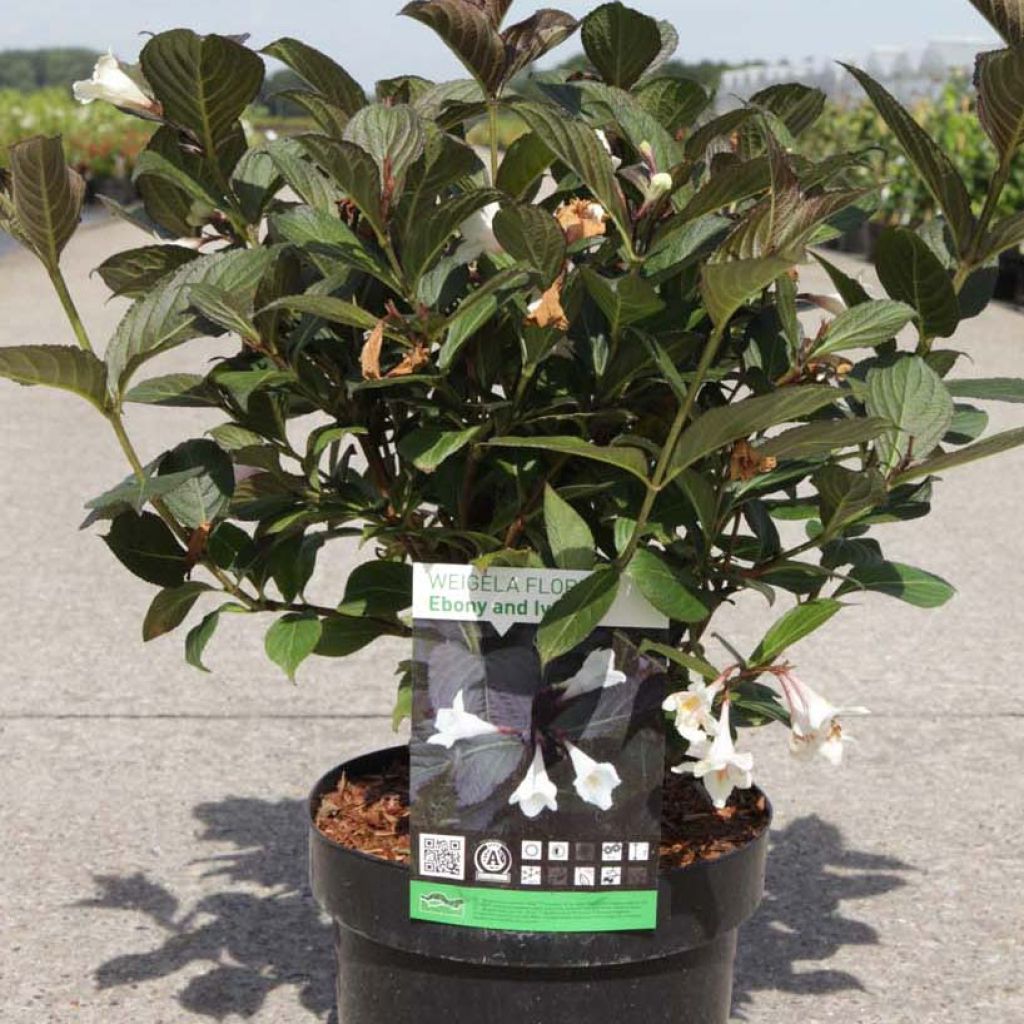

Weigela Ebony and Ivory
Weigela Ebony and Ivory
Weigela x florida Ebony and Ivory®
Old-fashioned Weigela
Beautiful plant, healthy and vigorous. The foliage is particularly lovely.
BobAin, 23/09/2024
This item cannot be shipped to the selected country
Delivery charge from €5.90
Delivery charge from €5.90
More information
Schedule delivery date,
and select date in basket
This plant carries a 24 months recovery warranty
More information
We guarantee the quality of our plants for a full growing cycle, and will replace at our expense any plant that fails to recover under normal climatic and planting conditions.
From €5.90 for pickup delivery and €6.90 for home delivery
Express home delivery from €8.90.
From €5.90 for pickup delivery and €6.90 for home delivery
Express home delivery from €8.90.

Does this plant fit my garden?
Set up your Plantfit profile →
Description
Weigela Ebony and Ivory is a very recent variety whose aesthetics admirably play with the light-dark register. This bush combines a green-purple foliage with chocolate, among the darkest that can be observed in Weigelas, with a candid flowering that explodes at the end of spring like a thousand little white trumpets. Elegant even in its compact and regular habit, suitable for gardens of all sizes, this young plant will bring a trendy and original touch to flowerbeds or flowering hedges. This weigela can also be grown in pots on the terrace or balcony.
Weigela Ebony and Ivory ('Velda') is derived, among others, from Weigela florida, native to northeastern China, Korea, and Japan. Weigelas are Asian and belong to the Caprifoliaceae family, just like honeysuckles. This innovative variety received the Silver Medal at Plantarium in Boskoop (Netherlands) in 2015.
It is a low bush, with bushy and harmonious vegetation, both upright, compact, and rounded. It eventually forms a ramified bush with arched branches, about 1.20m (3ft 11in) high and 1m (3ft 4in) wide. Its deciduous foliage consists of lanceolate and slightly undulate leaves, which have a very dark colour, a dark green tinged with purple and chocolate during flowering. Its funnel-shaped flowers, produced abundantly in May-June, are carried in corymbs at the tips of the branches. They are pure white, punctuated with yellow stamens at the throat. This flowering is also melliferous and nectariferous. The autumn foliage, also very ornamental, is a purple-red colour.
Hardy well beyond -20°C (-4 °F), the Weigela 'Ebony and Ivory' thrives in sunny or semi-shaded positions, in a fresh but well-drained soil. Its beautiful rounded and compact habit makes it a graceful bush, and the contrast between its almost black foliage and its white flowers gives it a unique personality. In a flowerbed, for example, give it as companions variegated dogwoods, a small almost white willow (Salix rosmarinifolia or 'Repens Nitida'), a golden-leaved spirea (Spiraea 'Tor Gold') or a white and massive flowering spirea (Spiraeae vanhouttei), or a 'Bailey Compact' Viburnum. In the background, the dark green foliage of hollies, boxwoods, or yews will form a beautiful setting for its contrasting colours and ensure the decor in winter. This Weigela can also be planted in pots to decorate the terrace, or planted alone to attract attention in small gardens.
Report an error about the product description
Weigela Ebony and Ivory in pictures
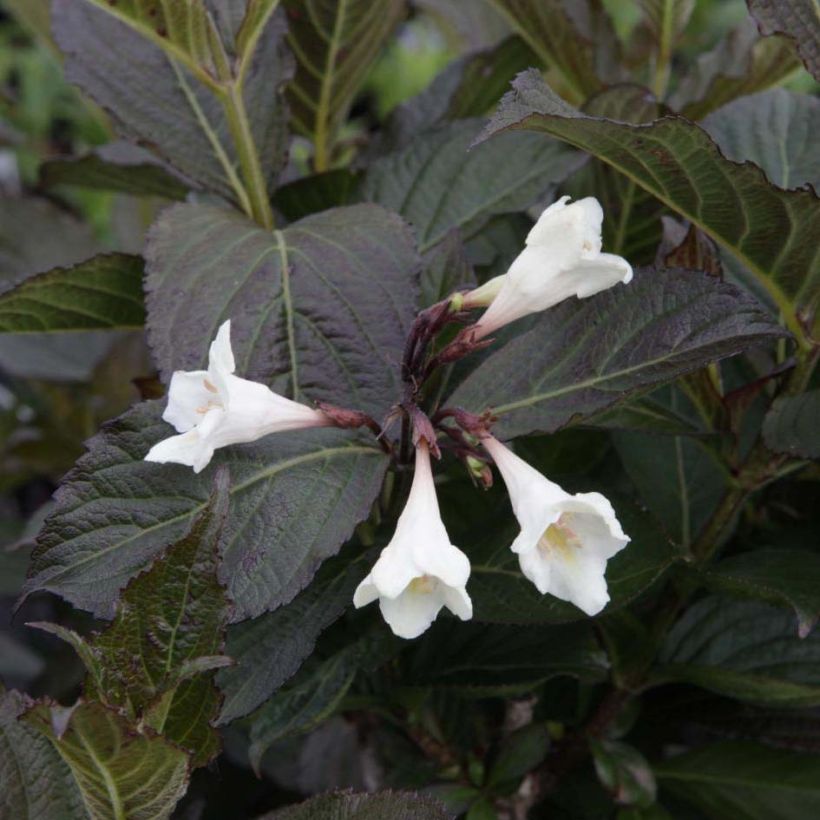

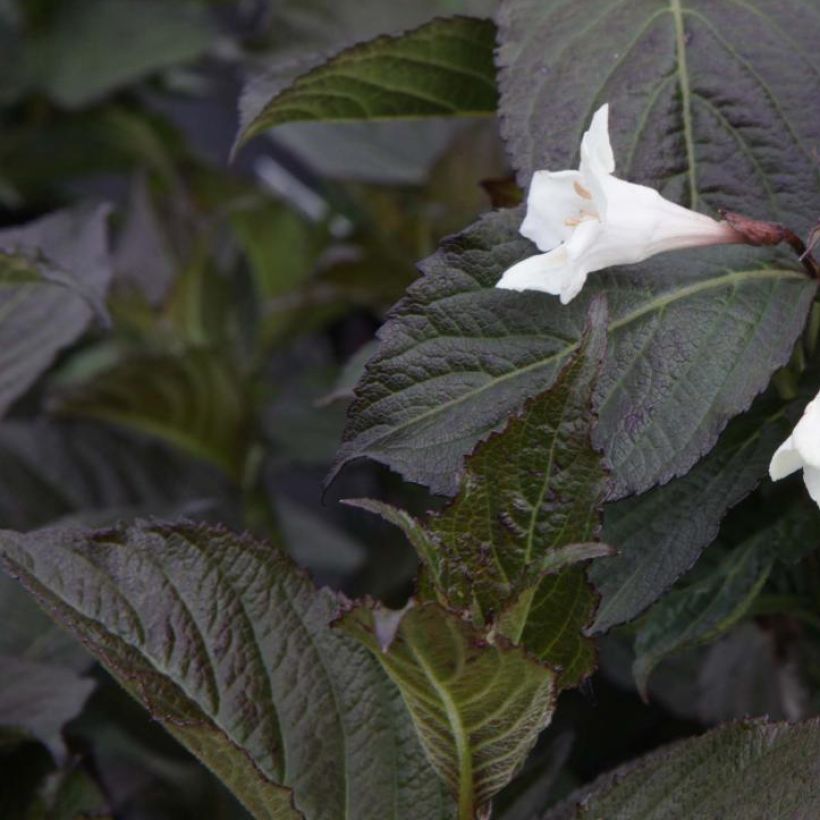

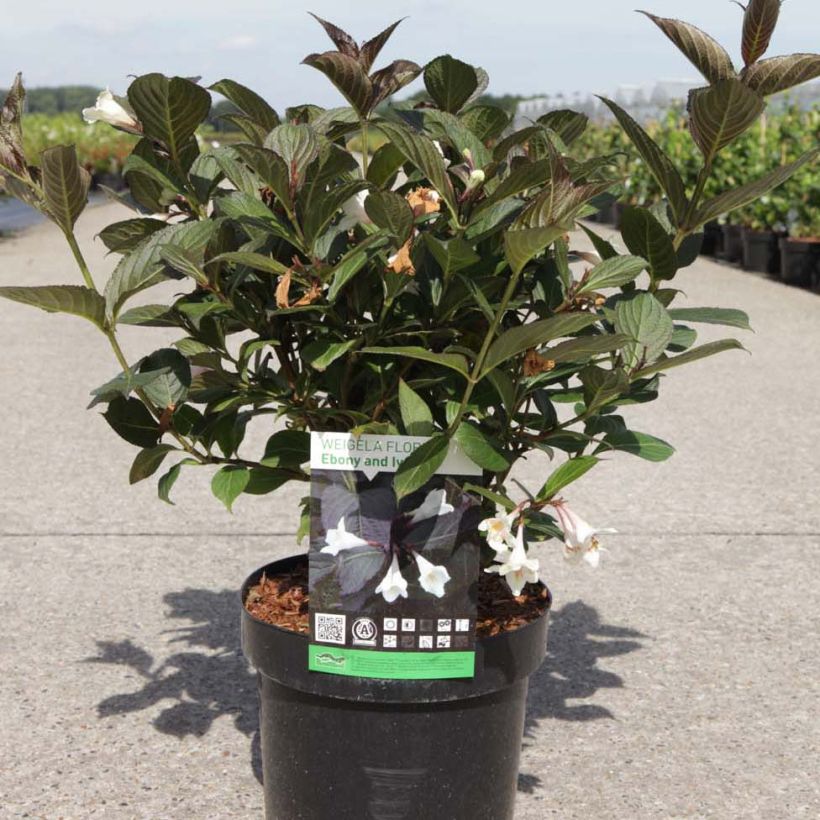

Plant habit
Flowering
Foliage
Botanical data
Weigela
x florida
Ebony and Ivory®
Caprifoliaceae
Old-fashioned Weigela
Cultivar or hybrid
Other Weigela
Planting and care
Hardy up to -25°C, the Weigela Ebony and Ivory thrives in sunny or semi-shaded positions. Plant it in a deep, well-drained, neutral to slightly alkaline soil from October to March (excluding freezing periods). To maintain a compact habit and promote abundant flowering, prune back the branches that have carried the spring flowers by 2/3, just after flowering.
Planting period
Intended location
Care
-
, onOrder confirmed
Reply from on Promesse de fleurs
Hedge shrubs
Haven't found what you were looking for?
Hardiness is the lowest winter temperature a plant can endure without suffering serious damage or even dying. However, hardiness is affected by location (a sheltered area, such as a patio), protection (winter cover) and soil type (hardiness is improved by well-drained soil).

Photo Sharing Terms & Conditions
In order to encourage gardeners to interact and share their experiences, Promesse de fleurs offers various media enabling content to be uploaded onto its Site - in particular via the ‘Photo sharing’ module.
The User agrees to refrain from:
- Posting any content that is illegal, prejudicial, insulting, racist, inciteful to hatred, revisionist, contrary to public decency, that infringes on privacy or on the privacy rights of third parties, in particular the publicity rights of persons and goods, intellectual property rights, or the right to privacy.
- Submitting content on behalf of a third party;
- Impersonate the identity of a third party and/or publish any personal information about a third party;
In general, the User undertakes to refrain from any unethical behaviour.
All Content (in particular text, comments, files, images, photos, videos, creative works, etc.), which may be subject to property or intellectual property rights, image or other private rights, shall remain the property of the User, subject to the limited rights granted by the terms of the licence granted by Promesse de fleurs as stated below. Users are at liberty to publish or not to publish such Content on the Site, notably via the ‘Photo Sharing’ facility, and accept that this Content shall be made public and freely accessible, notably on the Internet.
Users further acknowledge, undertake to have ,and guarantee that they hold all necessary rights and permissions to publish such material on the Site, in particular with regard to the legislation in force pertaining to any privacy, property, intellectual property, image, or contractual rights, or rights of any other nature. By publishing such Content on the Site, Users acknowledge accepting full liability as publishers of the Content within the meaning of the law, and grant Promesse de fleurs, free of charge, an inclusive, worldwide licence for the said Content for the entire duration of its publication, including all reproduction, representation, up/downloading, displaying, performing, transmission, and storage rights.
Users also grant permission for their name to be linked to the Content and accept that this link may not always be made available.
By engaging in posting material, Users consent to their Content becoming automatically accessible on the Internet, in particular on other sites and/or blogs and/or web pages of the Promesse de fleurs site, including in particular social pages and the Promesse de fleurs catalogue.
Users may secure the removal of entrusted content free of charge by issuing a simple request via our contact form.
The flowering period indicated on our website applies to countries and regions located in USDA zone 8 (France, the United Kingdom, Ireland, the Netherlands, etc.)
It will vary according to where you live:
- In zones 9 to 10 (Italy, Spain, Greece, etc.), flowering will occur about 2 to 4 weeks earlier.
- In zones 6 to 7 (Germany, Poland, Slovenia, and lower mountainous regions), flowering will be delayed by 2 to 3 weeks.
- In zone 5 (Central Europe, Scandinavia), blooming will be delayed by 3 to 5 weeks.
In temperate climates, pruning of spring-flowering shrubs (forsythia, spireas, etc.) should be done just after flowering.
Pruning of summer-flowering shrubs (Indian Lilac, Perovskia, etc.) can be done in winter or spring.
In cold regions as well as with frost-sensitive plants, avoid pruning too early when severe frosts may still occur.
The planting period indicated on our website applies to countries and regions located in USDA zone 8 (France, United Kingdom, Ireland, Netherlands).
It will vary according to where you live:
- In Mediterranean zones (Marseille, Madrid, Milan, etc.), autumn and winter are the best planting periods.
- In continental zones (Strasbourg, Munich, Vienna, etc.), delay planting by 2 to 3 weeks in spring and bring it forward by 2 to 4 weeks in autumn.
- In mountainous regions (the Alps, Pyrenees, Carpathians, etc.), it is best to plant in late spring (May-June) or late summer (August-September).
The harvesting period indicated on our website applies to countries and regions in USDA zone 8 (France, England, Ireland, the Netherlands).
In colder areas (Scandinavia, Poland, Austria...) fruit and vegetable harvests are likely to be delayed by 3-4 weeks.
In warmer areas (Italy, Spain, Greece, etc.), harvesting will probably take place earlier, depending on weather conditions.
The sowing periods indicated on our website apply to countries and regions within USDA Zone 8 (France, UK, Ireland, Netherlands).
In colder areas (Scandinavia, Poland, Austria...), delay any outdoor sowing by 3-4 weeks, or sow under glass.
In warmer climes (Italy, Spain, Greece, etc.), bring outdoor sowing forward by a few weeks.

































